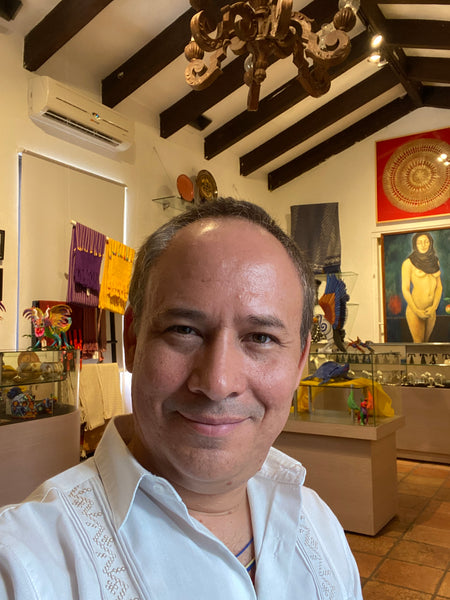Alebrijes, Alebrijes, Alebrijes!" This is what the artisan Pedro Linares López heard when he fell ill and took to his bed. During his deep slumber, he envisioned these creatures of vibrant colors, each with a combination of various body parts.
Upon recovering, he set out to recreate the creatures he had envisioned in his dreams: a donkey with wings, a lion with a dog's head, and a rooster with bull horns. He decided to name them after the phrase they had chanted: Alebrijes.
This is how this Mexican tradition originated, which is relatively young but has gained immense popularity, leading to grand celebrations centered around Alebrijes today. Mexican culture, since ancient times, has been characterized by the use of vibrant and vivid colors, a trait reflected in Alebrijes. These creatures feature combinations of various animal parts—heads, bodies, legs, wings—blended together in a unique and mystical manner, adding to their enchanting appeal.
Mexico is a country steeped in tradition and magic, and Alebrijes are no exception. It is believed that these creatures possess the power to protect and aid those who possess them. At Carapan, we have a very cared selection of Alebrijes, you may browse through our gallery and feel which one is keen to your eye and spirit.
Originally, the artist Pedro Linares crafted Alebrijes using paper maché, the same material employed in making piñatas. He would begin by constructing a wire frame and then apply layers of cardboard and paper maché to add form and volume.
Afterwards, the Alebrije is left to dry, and finally, it is coated with a base of white paint. Then, it is meticulously painted with an array of vibrant colors to create its characteristic design.
Today, Alebrijes are represented in diverse forms, including murals, objects, and even graffiti and are crafted using a variety of materials, including the renowned wood carvings from Oaxaca. We will share more details about Oaxacan Alebrijes in future blogposts.
Having become an integral part of Mexican culture, the fame of Alebrijes transcends borders, featuring prominently in international documentaries and fictional movies such as "Coco," where characters like Dante and Pepita thrust Alebrijes into the international spotlight.
Since 2007, Mexico City's Museum of Popular Art (MAP) has organized a parade where hundreds of monumental Alebrijes, towering above 6 feet tall, parade through the streets of downtown Mexico City.


0 comments